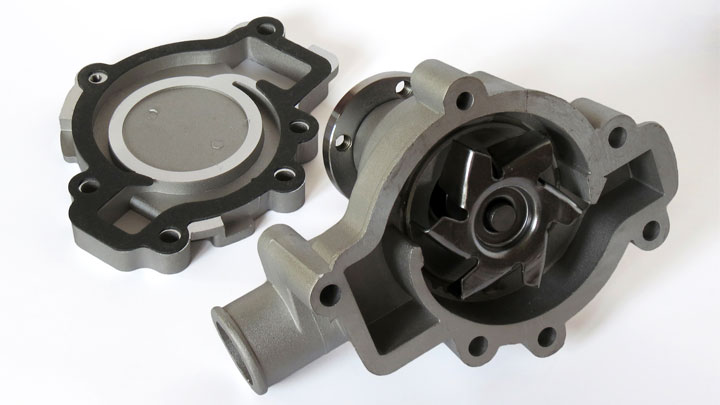5 Symptoms of a Bad Water Pump
These explosions produce a lot of heat, which can damage the engine if left unmanaged. Fortunately, a water pump prevents this from happening by circulating coolant through the engine.
But what if the water pump stops working? Let’s go over the most common symptoms of a bad water pump along with the average cost to replace the pump if needed.
Bad Water Pump Symptoms
An overheated engine can quickly lead to engine failure, a very costly consequence. Understanding how water pumps work to cool your vehicle is important, though it’s even more critical to know the signs of a failing or broken water pump in order to promptly address the issue.
#1 – Elevated Coolant Temperature
The most obvious symptom of a faulty water pump is an overheated engine. This is usually indicated by an engine temperature warning light (or an icon with wavy lines in it) or elevated engine temperature reading on the dashboard.
A functional water pump cools down the engine by circulating coolant, so a bad water pump will allow engine heat to build up to unsafe levels.
Note that the temperature gauge in some vehicles won’t move off center until engine temperatures have already reached dangerous levels, so be cautious if you notice the needle rise past its normal operating temperature position.
#2 – Overheating Engine
Steam billowing from the front of the vehicle while it’s moving or stopped can also indicate overheating. When the water pump is not working properly, coolant cannot circulate through the radiator to cool down so evaporation will occur.
If you see steam coming from the front of the vehicle, pull over to the side of the road immediately. Driving with an overheated engine for long can cause irreversible damage.
The cause of an overheated engine may be something different such as a bad radiator or faulty thermostat, but the result is the same. Unless it’s a small leak and you have the ability to add more coolant, have the car towed to the nearest mechanic for repairs.
#3 – Unusual Sounds
An engine with a whining, buzzing, or squealing noise could have a loose accessory belt, caused by a loose pulley or worn out bearings. If the offending bearings are in the water pump, it will need to be replaced entirely.
One of the most common causes of premature water pump failure is an accessory belt that is too tight.
#4 – Fluid Leak
A bright green or orange fluid pooled beneath the front of your car after it’s been parked for a few hours may be coolant. This can happen when gaskets and seals in the water pump wear out and crack or break.
A slow trickle of coolant can dry up on the outside of the water pump and solidify, or can even cause rust or corrosion (indicated by “pitting” in the metal). Some leaks only occur while the pump is turning (i.e. when the car is running), and others can occur when the car is off.
A leak from the weep hole of the water pump can indicate a faulty seal, as the weep hole prevents contamination of oil in the bearings with coolant and vice versa. This drippage stops when the vehicle engine shuts off.
#5 – Inconsistent Temperature Gauge Readings
A fully functional cooling system will keep the temperature gauge within normal limits at all times. However, a faulty water pump can cause the temperature gauge needle to oscillate from normal to hot and vice versa.
An air bubble is another possible cause of fluctuations in coolant temperature. Air around the temperature sensor may cause erroneous readings.

